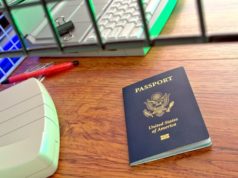
How to Get American Citizenship: A Comprehensive Guide
Obtaining American citizenship is a lifelong dream for many people all over the world. The United States provides a unique opportunity for individuals seeking better living standards, freedom, and economic opportunities. Every year, thousands of people apply for American citizenship, and the process can be challenging and complicated. However, by following the right steps and meeting the eligibility requirements, anyone can become a legal citizen of the United States. In this article, we will guide you through the process of getting American citizenship.
Understanding American Citizenship
Before diving into the application process, you need to understand the concept of American citizenship. American citizenship is more than just a piece of paper; it is an identity that grants individuals certain rights, privileges, and protections. American citizenship offers numerous benefits, including the right to vote, run for public office, and work legally in the United States.
Citizenship is obtained through a legal process known as naturalization, which is governed by federal law. To become an American citizen, you must first meet the eligibility criteria and then complete the naturalization process. The eligibility criteria include age, legal status, good moral character, and residency requirements. If you meet these requirements, you can move ahead with the naturalization process.
Eligibility Criteria
To be eligible for American citizenship, you must meet the following criteria:
Age – You must be at least 18 years old at the time of filing your application.
Legal Status – You must be a lawful permanent resident (LPR) of the United States. This means that you have a green card and have been living in the United States for a specified period of time.
Good Moral Character – You must demonstrate that you have good moral character, which means that you have not committed any serious crimes or violated any immigration laws while living in the United States.
Residency Requirements – You must have been a resident of the United States for a specified period of time. Generally, you must have lived in the United States continuously for at least five years as an LPR. If you are married to a U.S. citizen, the residency period is three years.
Application Process
If you meet the eligibility criteria, you can begin the application process. The application process involves several steps, including:
1. Filing Form N-400 – The first step is to submit Form N-400, Application for Naturalization. This form can be downloaded from the U.S. Citizenship and Immigration Services (USCIS) website or obtained from a local USCIS office. The form requires you to provide personal information, biographical information, and employment history.
2. Paying the Application Fee – There is a fee associated with filing your naturalization application. As of 2021, the fee is $725, which includes a $640 naturalization application fee and an $85 biometric services fee. Fees are subject to change, so be sure to check the current fee before submitting your application.
3. Completing Biometric Services – If your application is accepted, you will receive a notice in the mail to complete biometric services. This includes submitting your fingerprints, photograph, and signature. These will be used to conduct a background check.
4. Attending an Interview – After completing biometric services, you will be scheduled for an interview with a USCIS officer. The interview is designed to assess your eligibility for naturalization, test your knowledge of English and U.S. history and government, and verify your support of the U.S. Constitution.
5. Taking Naturalization Oath – If your application is approved, you will be invited to take the naturalization oath. This oath is a pledge of allegiance to the United States and its laws and Constitution. Once you take the oath, you will receive your Certificate of Naturalization, which establishes you as a legal citizen of the United States.
Preparing for the Citizenship Test
One of the most critical steps in the naturalization process is passing the citizenship test. The citizenship test is designed to test your knowledge of U.S. history and government and your ability to speak and write in English. The test is divided into two parts: the civics test and the English test.
Civics Test
The civics test consists of 100 questions, and you must correctly answer at least six out of ten questions to pass. The questions cover a range of topics, including U.S. history, government, and national symbols. USCIS provides free study materials, including civics practice tests and flashcards, on its website.
English Test
The English test consists of three components: speaking, reading, and writing. The speaking test assesses your ability to communicate basic information in English, such as answering interview questions. The reading test requires you to read a sentence in English, and the writing test requires you to write a sentence in English. USCIS provides free study materials and tests to help you prepare for the English test.
Renouncing Your Previous Citizenship
If you are a dual citizen of the United States and another country, you may wonder if you need to renounce your previous citizenship to become an American citizen. The United States permits dual citizenship, which means that you can hold two citizenships at the same time. However, some countries do not allow dual citizenship, and you may need to renounce your previous citizenship to become an American citizen. It is best to check with the embassy or consulate of the country of your previous citizenship to determine if you need to renounce your citizenship.
Conclusion
Obtaining American citizenship is a long and challenging process, but it is also a rewarding one. American citizenship offers numerous benefits, including the right to vote, work legally, and live in the United States permanently. By understanding the eligibility requirements, completing the application process, preparing for the citizenship test, and living according to the American values, anyone can become a proud citizen of the great United States of America.
Getting citizenship
Getting citizenship and all of its associated rights within the legal jurisdiction of the United States can be provided through the means of enacting the process referred to as naturalization. The legislative foundations for this process consist of the Immigration and Nationality Act.
People who obtain recognition under the citizenship rules set into place by the Immigration and Nationality Act and enacted by the USCIS will often, though not necessarily, first obtain recognition as permanent residents prior to being recognized as full citizens. In this way, people can secure rights to permanently reside and maintain legitimate employment in the country without yet being considered full citizens of the U.S.
Requirements for attaining citizenshipWhile prior status as a permanent resident of the United States may or may not be necessary as a means for further attaining the status of citizenship within the country, certain requirements will be found to be in place for attaining this recognition.
As such, permanent residents who have been recognized as such for a minimum of a 5 year period can enter into the process to attain citizenship within the U.S.
A hopeful recipient of citizenship rights who is married to an individual who already holds such status can accordingly initiate the naturalization process after just a 3 year period.
U.S. military service members who are not U.S. citizens as of yet will often be empowered to enter into the naturalization process and gain recognition for citizenship.
Documentation
The specific form administered by the USCIS toward the end of allowing eligible non-U.S. citizens to enter into the naturalization process and attain the status of citizenship within this national jurisdiction consists of Form N-400, the Application for Naturalization. An exception to the necessity for referring to the specific documentation of Form N-400 toward the end of attaining recognition through the status of citizenship consists of M-599, Naturalization Information for Military.
Test
One of the most important functions administered by the USCIS consists of the Citizenship Test, who is geared toward allowing people to verify that they have the required degree of knowledge in the English language, in the history of the United States, and in the civics issues relevant to the U.S. government and people.
Automatically provided citizenship
The status of holding citizenship within the jurisdiction of the U.S. can be rendered automatically, and not through the USCIS-administered process, for the children of U.S. citizens upon becoming 18 years of age.






















